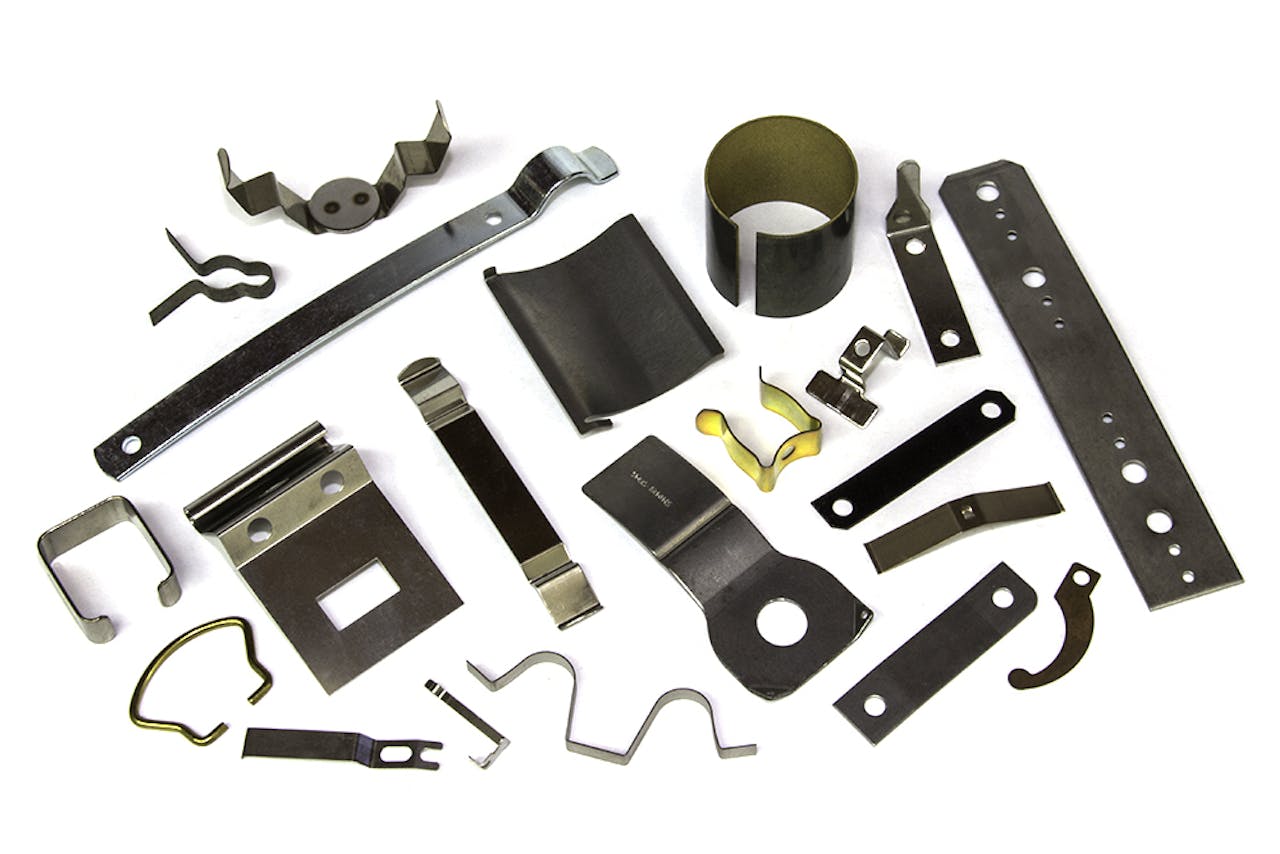Advanced Techniques in Steel Stamping for Precision Production
As industries continuously demand finer resistances and intricate styles in their steel elements, the pursuit for innovative techniques in metal stamping has actually heightened. From the utilization of sophisticated multi-stage marking processes to the combination of innovative automation innovations, the landscape of metal stamping is going through an extensive transformation.
Advanced Multi-Stage Stamping Processes
Reviewing the intricacies of advanced multi-stage marking procedures discloses the innovative methods utilized in modern manufacturing practices. Metal Stamping. Multi-stage marking is a complicated procedure that includes numerous steps to transform a level sheet of metal right into a last stamped item. Using modern dies, where various operations are performed at each stage of the stamping process, enables for high precision and effectiveness in the production of elaborate metal parts
Throughout the preliminary phases of multi-stage marking, the flat steel sheet is fed right into the marking press, where a collection of passes away are used to cut and form the material. Subsequent phases entail extra creating, flexing, and punching procedures to additional fine-tune the part. Each stage is thoroughly designed to build on the previous one, resulting in the development of complicated geometries with limited resistances.
Advanced multi-stage marking procedures need a high level of proficiency and accuracy to guarantee the quality and consistency of the stamped components. By making use of sophisticated equipment and tooling, manufacturers can generate a wide variety of metal parts with effectiveness and precision.
Accuracy Tooling Innovations
Accuracy tooling advancements have revolutionized the steel stamping market, improving efficiency and quality in producing procedures. These developments have substantially affected the method metal parts are produced, leading to greater accuracy and uniformity in the last products. One vital innovation is the development of computer numerical control (CNC) innovation in tooling style and manufacture. CNC systems permit detailed styles to be converted straight into tooling, making certain accuracy and repeatability in the marking procedure.
Moreover, the integration of sensors and real-time monitoring abilities in accuracy tooling has actually allowed suppliers to spot and deal with issues promptly, reducing downtime and reducing scrap rates. By including wise technology right into tooling, operators can optimize specifications such as stress, rate, and positioning throughout the marking procedure, resulting in boosted item top quality and enhanced efficiency.

Automation in Steel Stamping
The advancement of accuracy tooling advancements in the metal stamping sector has actually led the way for substantial advancements in automation, transforming the production landscape in the direction of boosted performance and productivity. Metal Stamping. Automation in steel marking entails the use of sophisticated equipment and robotics to perform numerous tasks commonly performed by human operators. This change towards automation provides numerous advantages, including improved precision, faster manufacturing cycles, and lowered labor costs
One secret aspect of automation in steel marking is the application of computer system numerical control (CNC) systems, which make it possible for precise control over the stamping process. CNC modern technology enables the creation of complex and detailed steel components with consistent high quality. Furthermore, automated systems can be programmed to run continually, causing greater output rates and much shorter preparations.
Additionally, automation boosts workplace safety by reducing hands-on handling of hefty materials and decreasing the threat of mishaps (Metal Stamping). As producing industries remain to accept automation, the future of steel marking holds fantastic guarantee for even higher efficiency and innovation
High-Speed Stamping Methods

One of the main advantages of high-speed marking methods is the capability to create a big volume of Metal Stamping components in a much shorter quantity of time contrasted to typical stamping methods. This raised efficiency not only allows suppliers to fulfill limited manufacturing deadlines however likewise makes it possible for cost financial savings with economies of range. Furthermore, high-speed marking can help in reducing product waste by enhancing the material use during the marking process.
Additionally, high-speed marking methods often include cutting-edge functions such as fast die change systems and real-time tracking abilities, even more improving the general performance and flexibility of the metal marking procedure. As innovation remains to advance, high-speed marking is expected to play a crucial duty in driving the future of precision manufacturing.
High Quality Control in Stamping Workflow
Efficient top quality control actions are crucial for ensuring the reliability and uniformity of metal stamping operations. Quality assurance in marking procedures involves a series of systematic processes targeted at spotting and avoiding issues in the produced parts. One essential element of quality assurance in metal marking is making use of advanced examination techniques such as optical assessment systems and coordinate determining makers (CMMs) to validate the dimensions and resistances of stamped components.
Furthermore, quality assurance steps in stamping operations usually consist of the execution of statistical process control (SPC) techniques to check the production process in real-time and ensure that it stays within acceptable limitations. By assessing information and recognizing trends, suppliers can proactively attend to any type of discrepancies from the preferred top quality criteria.
Moreover, quality control in metal marking operations likewise entails complete material screening to ensure that the raw products utilized fulfill the called for specifications for the stamping process. This might include conducting material hardness tests, tensile toughness tests, and dimensional inspections to guarantee the high quality and stability of the stamped components. Overall, implementing durable quality assurance procedures is vital for achieving premium stamped components constantly.
Final Thought
Finally, advanced techniques in metal marking play a critical role in precision production procedures. Through multi-stage stamping procedures, innovative tooling solutions, automation, high-speed techniques, and rigorous high quality control actions, producers can accomplish greater levels of precision and effectiveness in their procedures. These advancements in metal marking innovation have article enabled firms to produce complicated additional resources parts with tight resistances, inevitably causing boosted product quality and customer complete satisfaction in the manufacturing sector.